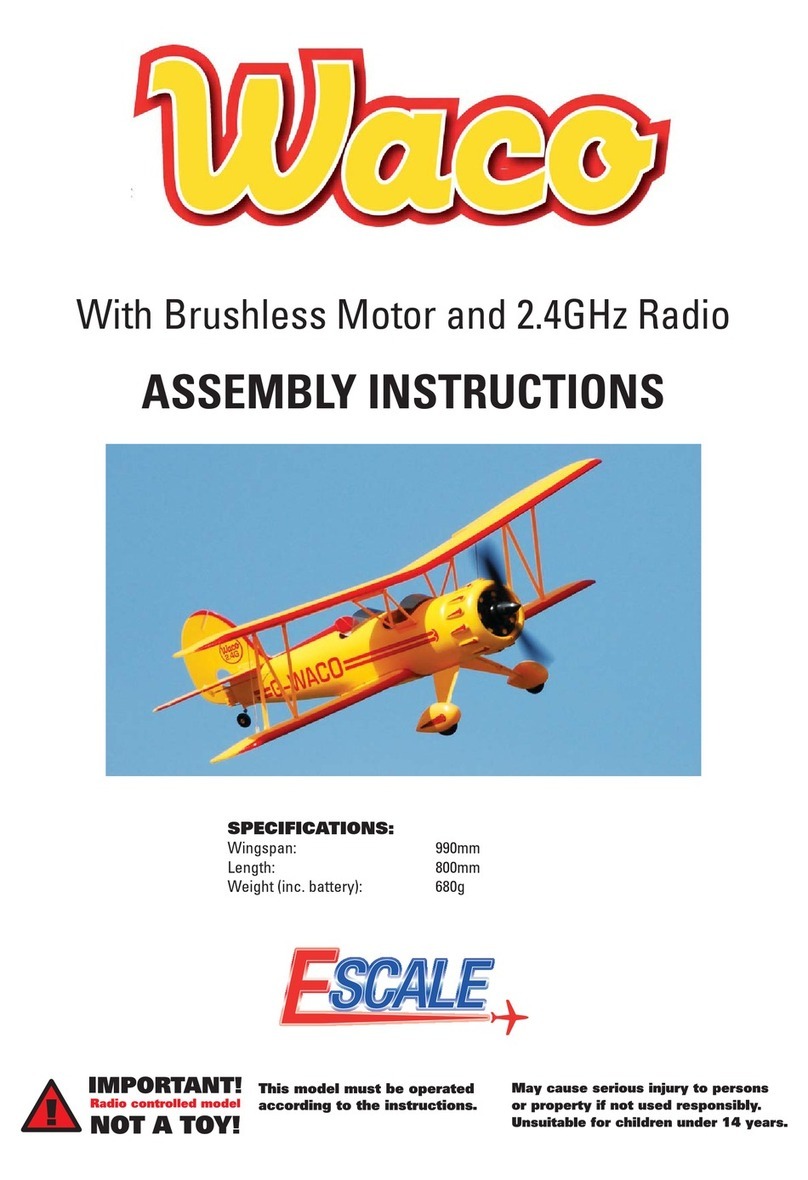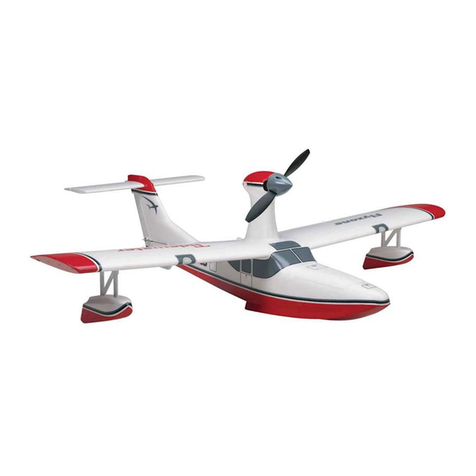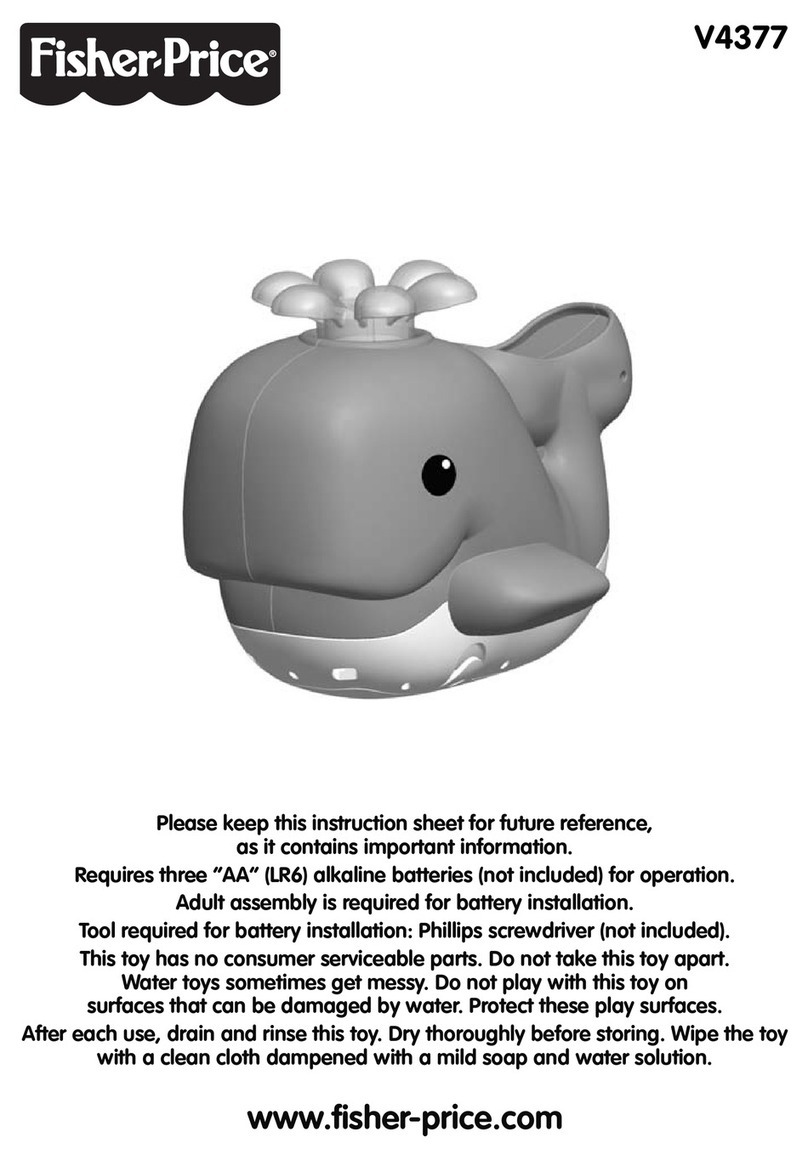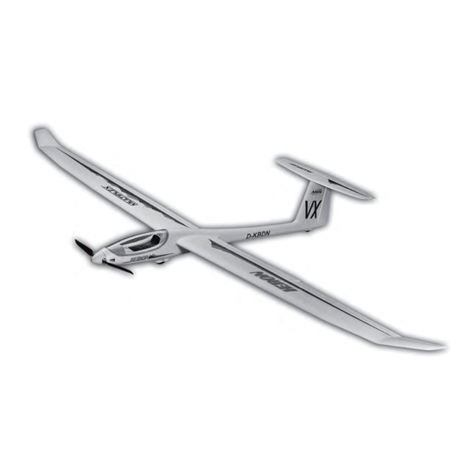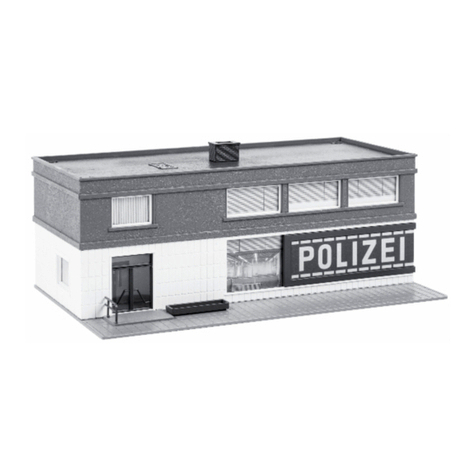EScale SAMURAI User manual

SAMURAI
ARF Electric Glider with Fibreglass Fuselage
Carbonfibre Boom & Sheeted Foam Wings
ASSEMBLY INSTRUCTIONS
SPECIFICATIONS:
Wingspan: 1756mm
Length: 1060mm
Wing area (dm²): 29.8dm²
Weight (including battery): 850-950g
Radio required: 6ch, 5 servos.

2 EScale Samurai - Instruction Manual
VITAL SAFETY INFO
CAUTION! The Samurai glider is not a toy.
It can cause injury to persons/animals and/or property if
not used correctly. It is unsuitable for beginners or persons
under the age of 14. You should take care and observe
the principles of safety when flying this model. In the
UK, we recommend you observe the British Model Flying
Association (BMFA) safety code at all times, which can be
found at the following address: http://www.bfma.org
In Australia, please contact your hobby retailer or the Model
Aircraft Association of Australia (MAAA).
YOU ASSUME ALL RISK.
This is not a beginners kit. Before beginning construction,
please read this document thoroughly and familiarize
yourself with the construction sequence.
If any information in this manual is unclear, please contact
your retailer for help.
After reading this manual store it in a safe place for future
reference.
This kit is not suitable for beginners.
Intermediate to advanced skills are required to build it.
Intermediate to advanced R/C flying skills are required
to fly it.
ABOUT THE FLYING AREA
REQUIRED
Only fly in large open spaces that are approved for R/C model
flying and that are away from people, animals, buildings,
power lines, water or trees.
CONTENTS
weee disposal.................................................................. 2
Vital safety info ............................................................... 2
About the flying area required ...................................... 2
Guarantee/warranty........................................................ 2
Kit contents....................................................................... 3
Fitting aileron servos to wings ..................................... 4
completing the wing....................................................... 6
Fitting boom, horizontal & vertical stabilizers........... 8
Fitting elevator & rudder pushrods & horns............. 10
Installing flap horn and pushrod................................. 12
Canopy, motor, folding prop & spinner ...................... 14
Checking C of G & control throws.............................. 15
GUARANTEE/WARRANTY
J. Perkins Distribution Ltd guarantee this product to be free of manufacturing and assembly defects for a period of one year from
time of purchase and Model Engines (Aust.) Pty. Ltd. is for 30 days. This does not affect your statutory rights. This warranty is not
valid for any damage or subsequent damage arising as a result of a crash, misuse, modification or for damage or consequential
damage arising as a result of failure to observe the procedures outlined in this manual. Operation of this model is carried out
entirely at the risk of the operator. Please note that, whilst every effort is made to ensure the accuracy of instructions and material
included with this product, mistakes can occur and neither J. Perkins Distribution Ltd/Model Engines (Aust.) Pty. Ltd. nor it’s
distributors will be held liable for any loss or damage arising from the use of this model or for any loss or damage arising from
omissions or inaccuracies in the associated instructions or materials included with this product.
We reserve the right to modify the design of this product, contents and manuals without prior notification.
© 2010 J Perkins Distribution Ltd, Lenham, Kent, UK ME17 2DL. www.jperkinsdistribution.co.uk
Model Engines (Aust.) Pty. Ltd., Noble Park, Victoria 3174, Australia. www.modelengines.com.au.
All rights reserved. E&OE.
WEEE DISPOSAL
Do not dispose of this product with other household
waste. Instead, it is your responsibility to dispose of
your waste equipment by handing it over to a designated
collection point for the recycling of waste electrical
and electronic equipment. The separate collection and
recycling of your waste equipment at the time of disposal
will help to conserve natural resources and ensure that
it is recycled in a manner that protects human health and
the environment. For more information about where you
can drop off your waste equipment for recycling, please
contact your local council, your household waste disposal
service or the shop where you purchased the product.

3EScale Samurai - Instruction Manual
KIT CONTENTS
ARF CONTENTS LIST
Gel Coat pre-finished fibreglass fuselage
Film covered, balsa skinned, foam wings
Film covered, solid balsa, rudder, horizontal stabilizer and elevator
Carbonfibre tail boom
Canopy
Screw set
Pushrods, control horns, clevises and Velcro strips
Plywood parts (wing joiners, servo tray, pushrod guides, servo mounts)
Plastic servo covers
ADDITIONAL ITEMS REQUIRED
Part No. 5500371 Samurai Motor/prop/spinner/45A ESC Set
2x wing servos. Hitec HS-125MG or HS-5125MG digital or 7720460 S/TEC Nano Super-D MG 19g digital servo
3x mini servos. Hitec HS-65MG or HS-5065MG digital or 7720460 S/TEC Nano Super-D MG 19g digital servo
2x 300mm servo extension leads
40 Amp ESC (Minimum) 50 Amp recommended
7.4V 1800mAh LiPo 20C Battery (Minimum)
Battery/ESC connectors
Minimum 5 channel computer radio with mixing
Minimum 5 channel receiver
15min Epoxy, thin flexible CA, general purpose silicon
Assorted tools (e.g. spanners, screw drivers, drills, hobby knife)

4 EScale Samurai - Instruction Manual
1. Locate the servo holes in the wings and
carefully remove the film covering using a
new blade in your hobby knife.
2. Depending on which servos you choose to
use, there are several mounting methods. For
inspiration, two mounting methods are shown
the end result is the same, so use one of
these or another method if you choose.
If you are using micro servos with horizontal
mounts, locate the small plywood servo
mounts and trial fit your servo in the hole.
Adjust if necessary
Connect the servo to a servo programmer or
receiver to set for neutral position.
3. This is the result you are looking for with a
micro servo.
4. If you are using a purpose built wing servo
you will have to enlarge the hole in the wing
to accept the servo.
Trial fit your servo in the hole.
FITTING AILERON SERVOS TO WINGS

5EScale Samurai - Instruction Manual
5. Use a felt tip pen to mark around the servo.
6. Use a sharp hobby knife to remove the film,
balsa and foam to allow the servo fit neatly in
the hole..
Attach a 300mm servo extension lead to servo
and use the cord provided or wire with a hook
to pull the servo lead through the wing.
7. Use the plywood servo mounts provided or
if they are not suitable, make a mount from
5mm ply as shown.
Glue the servo frame into position using foam
safe CA or epoxy.
8. Screw the servo into the frame.
Install the control horn, pushrod and retainer.
TIP: Remember to add the retainer prior to putting
the right angle bend at the horn end.

6 EScale Samurai - Instruction Manual
9. Locate the centre wing panel and two outer
wing panels which now have the servos
installed.
10. Locate and test fit the plywood wing joiners/
dihedral braces and wooden dowel pins.
Once you are happy with the test fit,
disassemble in preparation for gluing.
TIP: Now is a good time to run the servo leads
through the wing as it is much easier to do
prior to gluing.
11. Before applying the epoxy, cut two pieces
of plywood or balsa 18mm wide to assist in
achieving the correct dihedral. One will be
used at each tip as shown.
Using 15min epoxy, liberally coat the wing
joints, joiners and dowels then assemble
as per your test fit. Push the outer sections
firmly together and clean away any excess
epoxy with methylated spirits and paper
towel.
Place the wing on a flat surface and use the
18mm scraps to support the tips until the
epoxy sets.
12. Trim the servo covers to fit and apply clear
sticky tape to the outside edges.
Locate the holes for the wing mounting
screws in the centre section and test fit the
wing onto the fuselage.
Countersunk aluminium washers are provided
to spread the load.
TIP: Be careful not to over tighten and crush the
wing.
COMPLETING THE WING

7EScale Samurai - Instruction Manual
13. Locate the three pieces of plywood for the
servo tray.
Assemble and glue as shown in the picture
opposite.
14. Test fit the servo tray through the front
opening in the fuselage and slide back in to
position.
Adjust the fit if necessary.
Remove the servo tray and test fit the servos.
Drill the holes for the servo screws then
remove the servos from the tray..
15. Glue the servo tray into the fuselage using
general purpose silicon (as shown) or 15min
epoxy.
If you use epoxy, rough up the inside of
the fuselage with coarse sandpaper to aid
adhesion. Set aside until the epoxy sets.
If you use silicon, make neat fillets of silicon
where the plywood meets the fuselage and
set aside overnight to allow the silicon to fully
cure.
16. Fit the servos in the servo tray with screws
provided by the servo manufacturer.

8 EScale Samurai - Instruction Manual
17. Test fit the carbonfibre tailboom to the
fuselage. If required,use fine sand paper to
make small adjustments to the fuselage to
allow the tube to slide easily all the way up to
the indentation on the fuselage.
Glue in place using 15min epoxy or thick CA.
18. Locate the horizontal stabilizer and
carbonfibre tail mount.
Skilfully mark the centre line at 90 degrees to
the trailing edge of the horizontal stabilizer
using a set square and felt tip pen, then trace
an outline of the mount as shown.
Using a new blade, carefully remove the film.
Take great care not to cut into the balsa or
you will weaken the horizontal stabilizer and
may cause it to fail.
DO NOT GLUE AT THIS STAGE.
19. Locate the vertical stabilizer and rudder.
Remove film covering the mounting holes in
the horizontal stabilizer.
Test fit the vertical stabilizer in the horizontal
stabilizer and mark with a felt tip pen as
shown.
Using a new blade, carefully remove the film.
Take great care not to cut into the balsa
or you will weaken the stabilizers and may
cause them to fail.
20 Glue the vertical stabilizer into the horizontal
stabilizer using 15min epoxy.
Use a set square to ensure the vertical
stabilizer is exactly 90 degrees to the
horizontal stabilizer as shown..
FITTING BOOM, HORIZONTAL & VERTICAL STABILIZERS

9EScale Samurai - Instruction Manual
21. Test fit the carbonfibre tail mount to the small
end of the carbonfibre tail boom..
22. Use fine sand paper on the tail boom to make
it possible to slide the mount on without too
much effort.
23. The tail boom should be able to finish flush
with the end of the tail mount.
Remove the tail mount from the end of the tail
boom.
DO NOT GLUE AT THIS STAGE.
24. Rough up the flat side of the tail mount with
coarse sandpaper to aid adhesion.
Test fit to ensure you know how it is going to
sit then glue using 15min epoxy or thick CA.
If you use CA take care to get the alignment
right the first time as you may not get time to
reposition it.
If you use epoxy, clean away any excess
epoxy, then set aside until the epoxy sets.

10 EScale Samurai - Instruction Manual
25. Secure the wing on the fuselage with the
wing screws provided prior to gluing on the
tail mount and stabiliers.
This will aid with alignment.
Test fit the tail to the tail boom the horizontal
stabilizer and wing should line up as shown,
the red lines with arrow heads are the same
length.
Remove the tail and apply 15min epoxy.
Replace the tail and double check the
alignment.
Carefully set aside until the epoxy sets.
26. Measure 30mm forward of the front of the
vertical stabilizer and drill a hole to accept
the pushrod outer tube and feed it through
into the fuselage.
27 Feed the other push rod and outer tube
through from the front of fuselage through the
slot provided on the servo mounting tray.
28. Attach the pushrods to the servo arms using
the factory installed z-bend.
Feed the pushrods through the outer tubes
Use a servo tester or set up the receiver to
centre the servos.
Attach the servo arms to the servos in the
neutral position.
FITTING ELEVATOR & RUDDER PUSHRODS & HORNS

11EScale Samurai - Instruction Manual
29. Locate the position on the rudder for the
control horn and remove the film using a new
blade.
Take great care not to cut into the balsa or
you will weaken the rudder and may cause it
to fail.
30. Glue in place using 15 minute epoxy or thick
CA.
Ensure servo is still centered.
REMEMBER to feed the keeper on prior to bending
the wire.
Mark where you want to bend the wire to acheive
a neutral position.
Bend at 90 degrees and trim to 7mm. Push wire
through the control horn and position the
keeper.
31. Connect the pushrod to the control horn using
the supplied clevis.
Remember to add a small piece of silicone
tube to the clevis to prevent it falling off in
flight.
32. Install the elevator control horn and connect
the pushrod to the control horn using the
supplied clevis.
Remember to add a small piece of silicone
tube to the clevis to prevent it falling off in
flight.

12 EScale Samurai - Instruction Manual
33. Measure 15mm in from the centre line of the
wing.
The horn must located on the outside of this
line or it will foul on the fuselage.
34. Measure 7mm in from the hinge line.
Use a sharp hobby knife to cut a neat square
in the balsa flap.
The hole needs to go all the way through the
flap.
Test fit the horn as shown.
Glue the horn in place using thick CA or 15min
epoxy.
35. Mark a point on the fuselage, 14mm out from
the centre line of the fuselage and 10mm
down from the top of the fuselage as shown.
Drill a hole at this point.
Use a servo tester or set up the receiver to
centre the flap servo.
Attach the flap pushrod wire to the servo
horn and fit the servo horn to the servo in the
neutral position.
36. When the servo is in the neutral position, the
flap should be 50% down.
After carefully marking the pushrod wire with
a felt tip pen at the correct point to achieve
50% down, use pliers to make a right angle
bend AWAY from the fuselage as shown.
INSTALLING FLAP HORN AND PUSHROD

13EScale Samurai - Instruction Manual
37 To provide positive control of the elevator and
rudder, cut 3 or 4 foam cylinders from a block
of scrap packing foam. The foam will hold the
pushrod tubes against the side of the boom
and prevent flexing.
The first picture shows the foam being cut
using the end of a carbonfibre boom.
The foam cylinders are then positioned inside
the carbonfibre boom at approximately the
spacings shown using a dowel or carbonfibre
tube..
38. Feed the foam into the tail boom as shown
through the top of the fuselage.
Position the foam cylinders at regular
intervals as shown in the picture above..
Remember to do this after you have installed
the pushrod tubes. There is no need to glue
the foam in and it can be removed by pushing
a dowel up the boom from the tail end.
39. When attaching the wing, remember to slide
the pushrod wire into the flap horn.
This picture shows the flap in the neutral or
up postion.
40. This picture shows the flap in the fully down
position.
TIP: Take great care when setting up the flap in
the radio as it is very easy to stall the servo
which could result in servo stripping a gear or
burning out the circuit board.

14 EScale Samurai - Instruction Manual
41. Locate the canopy, canopy wire and
fibreglass cloth.
The wire will be used to hold the front of the
canopy in place..
Hold the wire in place and completely soak
the fibreglass cloth using thick CA.
Set aside to completely cure, overnight if
possible.
42. Attach the matching small piece of velcro
to the canopy to match the postion on the
fuselage.
43 Secure the motor in the nose of the fuselage.
Position the motor so the motor wires run
inside the base of the fuselage.
Use medium strength thread locking
compound (blue) on the screws to prevent
them coming loose.
Attach the propeller blades and spinner.
44. TIP: When setting up the glider on your radio,
it is a good idea to remove the blades so
there are no nasty surprises!.
CANOPY, MOTOR, FOLDING PROP & SPINNER

15EScale Samurai - Instruction Manual
45. Connect up and fit your electronic speed
controller, receiver.
Position your LiPo battery but do not plug
it into the speed controller until your have
turned on your transmitter.
Secure the electronic speed controller,
receiver and LiPo battery using velcro.
It is very important to keep the all the wiring
secure to prevent it coming into contact with
the spinning motor.
46. Test flying has shown that 55-60mm back from
the leading edge at the wing root is a good
safe starting point. You may find later a more
rearward CofG is more to your liking.
Mark the centre of gravity CofG either side of
the fuselage on the wings with a felt tip pen.
Balance the glider right side up with your
finger tips on the CofG marks.
Remember to test CofG with your flight
battery installed.
47. Our test samples balanced without the need
to reposition the battery or add lead.
If it does not balance, add lead weight to the
nose or tail until it balances evenly.
If the lead you use is not self adhesive,
secure in place with double sided tape or
epoxy.
Do not attempt to fly the Samurai if the CofG
has not been checked.
48. Set up your model in your transmitter and
adjust the control throws to achieve the
figures shown.
Carefully set up the flap to acheive about 45
degrees down at full deflection. Be carefull
not to stall the servo when setting up the flap.
The flap should not touch the fuselage at full
deflection (full down).
Now charge your flight pack, stop admiring
what you have done and go flying!!!
CHECKING C OF G & CONTROL THROWS

June 2010
Australasian agents:
Model Engines, Melbourne, Australia
www.modelengines.com.au
SAMURAI
ARF Electric Glider with Fibreglass Fuselage
Carbonfibre Boom & Sheeted Foam Wings
American agents:
Hobby Lobby International, Brentwood, Tennessee, U.S.A.
www.Hobby-Lobby.com
European agents:
J Perkins Distribution, Lenham, England
www.jperkinsdistribution.co.uk
Table of contents
Other EScale Toy manuals
Popular Toy manuals by other brands

Real Good Toys
Real Good Toys Beachside Bungalow instructions

Fisher-Price
Fisher-Price W9859 instruction sheet
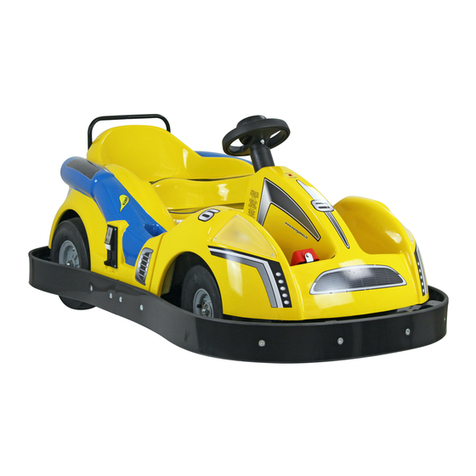
EuroGames
EuroGames MINICAR Operation and Maintenance Handbook
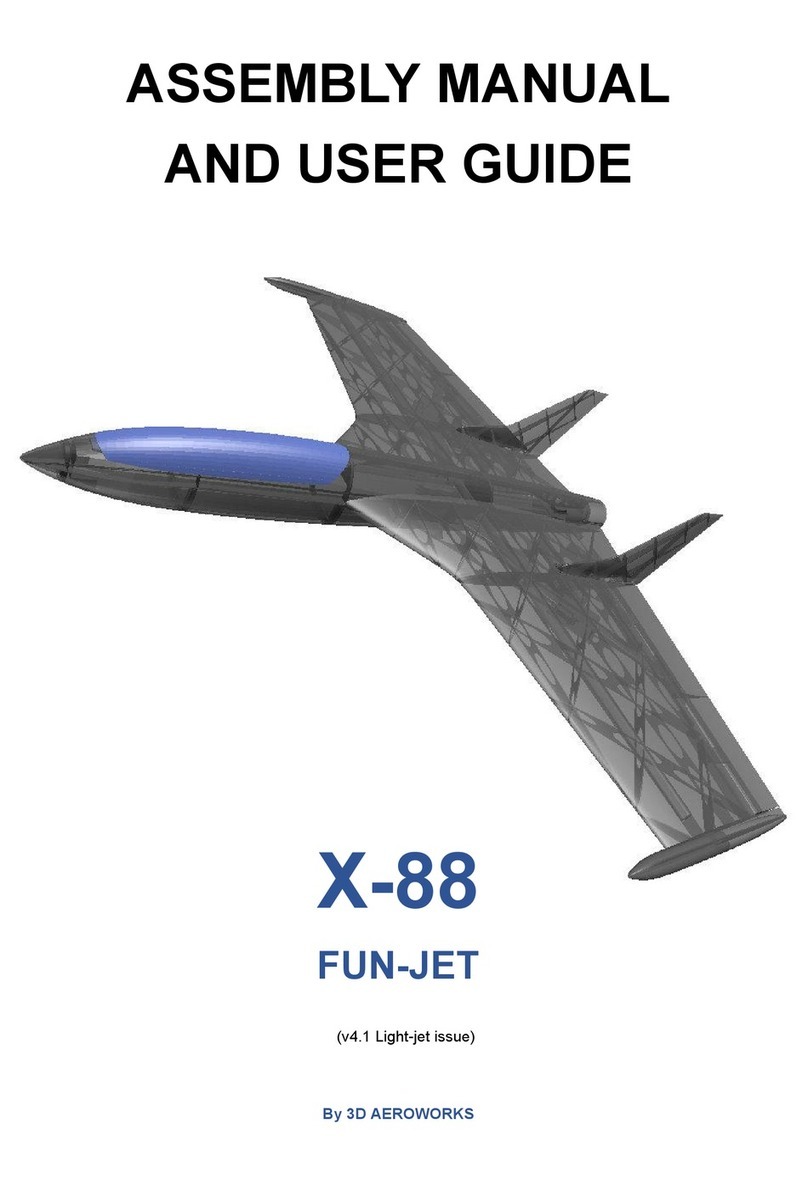
3D AEROWORKS
3D AEROWORKS X-88 Fun-Jet Assembly manual and user guide

Eduard
Eduard DKM Blücher quick start guide
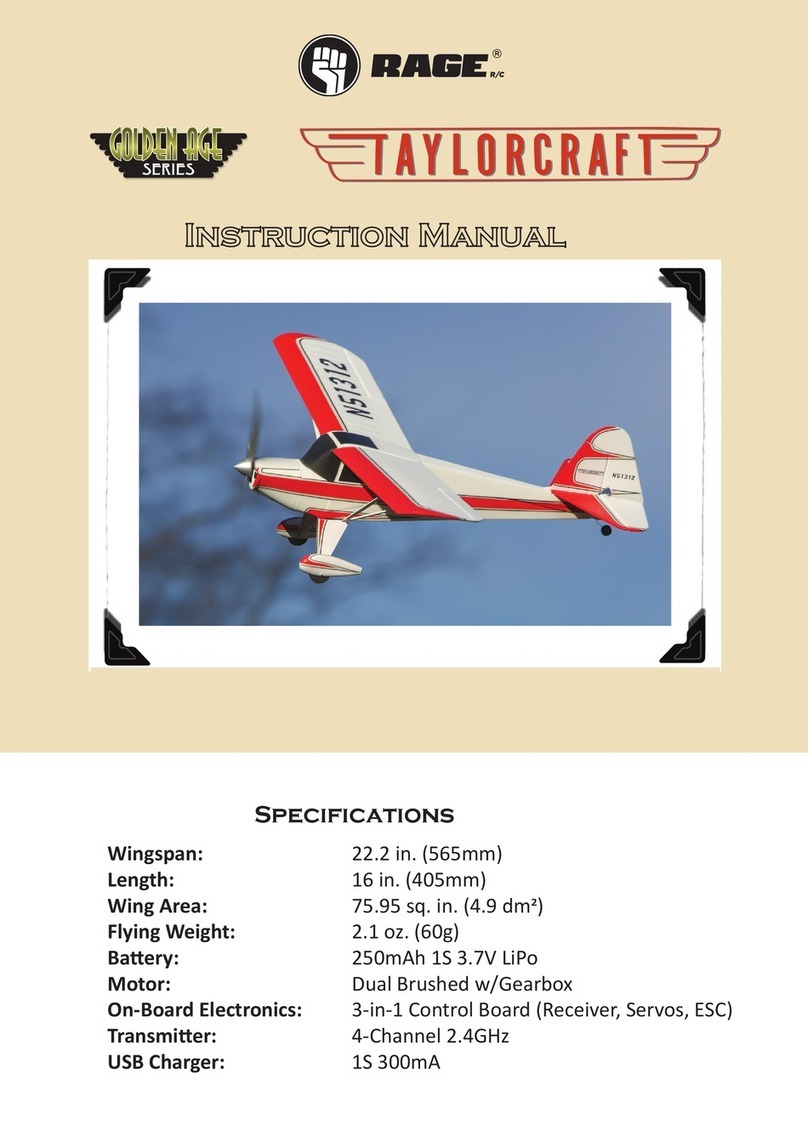
Rage
Rage Golden Age Series instruction manual



